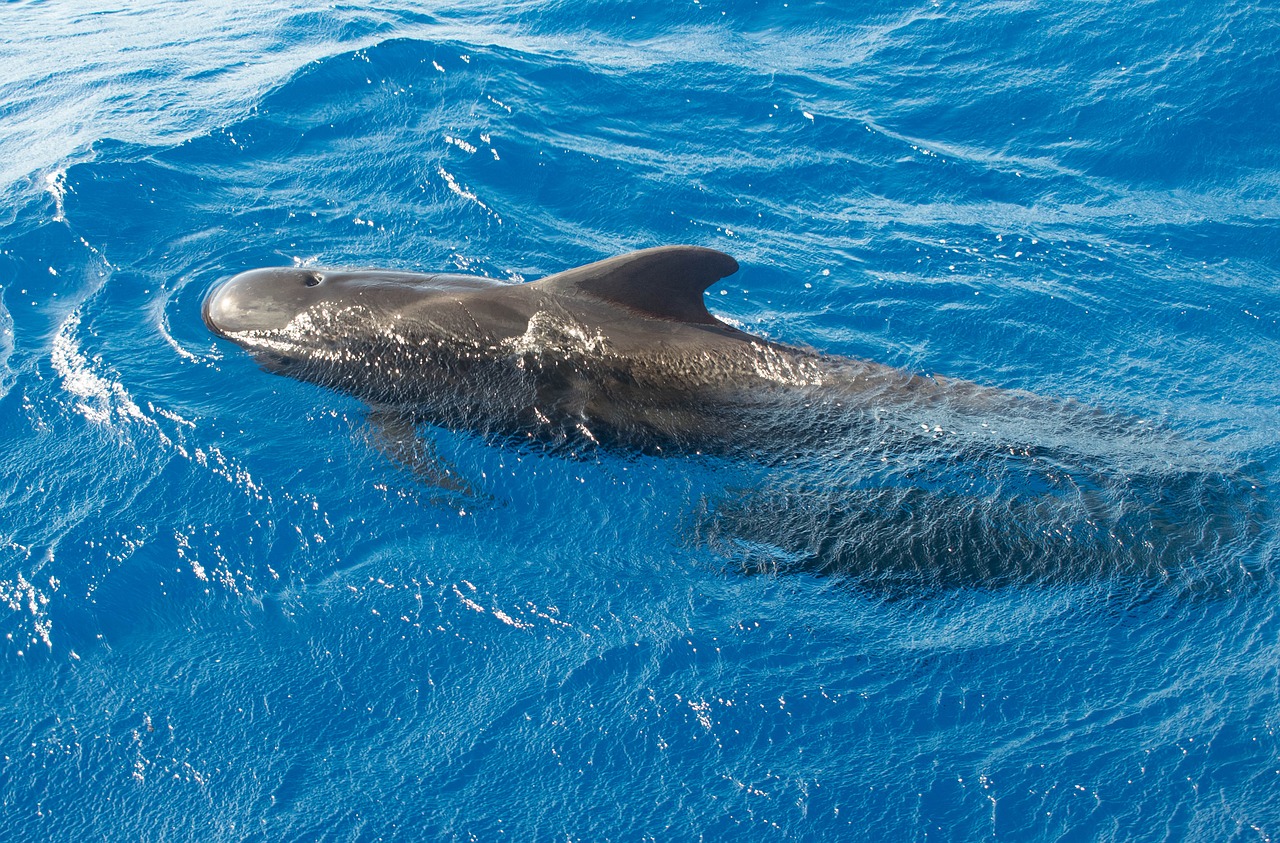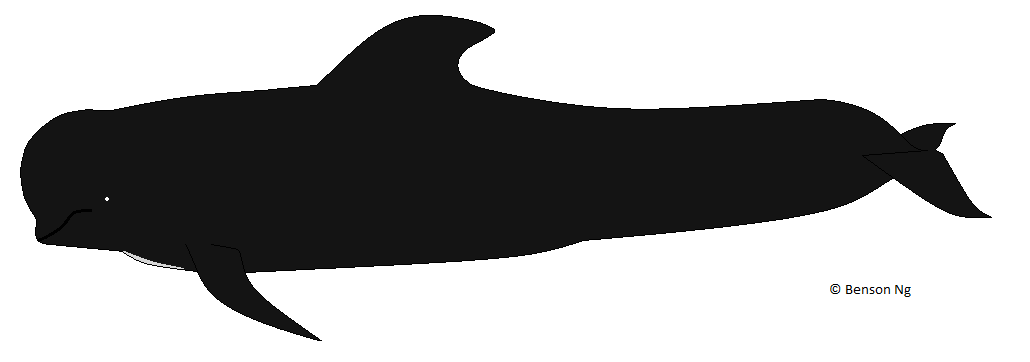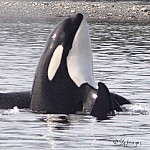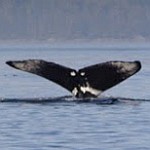The Short-Finned Pilot whale (Globicephala macrorhynchus) is the second largest member of the dolphin family, reaching lengths of 7 meters (23 feet). They are found in most seas around the world; however they primarily inhabit tropical waters. They usually stay offshore in deeper waters beyond the continental shelves, but they sometimes come close to the shore. In the Pacific Ocean, their range extends from the Gulf of Alaska to Central America. Their movements depend on the location and abundance of their prey.
Short-Finned Pilot whales have a black, robust body. They have a gray patch on the ventral (belly) side between its flippers and sometimes a gray saddle patch behind the dorsal fin. Short-Finned Pilot whales have a bulbous head and a low dorsal fin with a broad base that is located just forward of mid-body. Their flippers are short, about one-sixth of their body lengths, and narrow.
They primarily eat squid, but will eat other cephalopods like octopus, and fish such as herring. They normally have 40-48 teeth, which are used to catch their prey. They may eat up to 39 pounds of food per day. Like other toothed whales, Short-Finned Pilot whales may be found in large groups, which usually number around 25-50 animals, but may contain over 1,000. These tightly-knit groups may mass strand, with sometimes hundreds of animals stranding at once.
Short-Finned Pilot whales have been observed to “spy-hop” and they have a habit of lobtailing, i.e. slapping their flukes on the surface of the water. They rarely breach and they do not ride the waves in front of boats. A social structure develops within a large pod when subgroups form. The subgroups are adults males, females with calves, and juveniles. They spread themselves out in a long line when hunting and also when resting at the surface.
Short-Finned Pilot whale (Globicephala macrorhynchus) Specifics:
Length:
up to 7 m (23 ft)
Weight:
up to 3000 kg (6600 lbs)
Colour:
Black coloured body
Gray patch between their flippers
Gray saddle patch behind dorsal fin
Features:
Bulbous head
Low dorsal fin with a broad base
Long, narrow flippers that are pointed at the tip
Body may have scars





